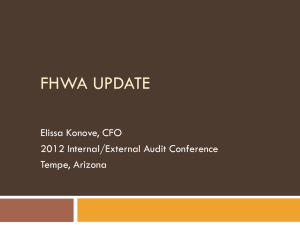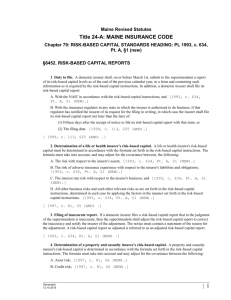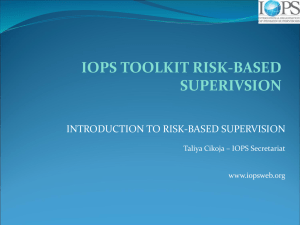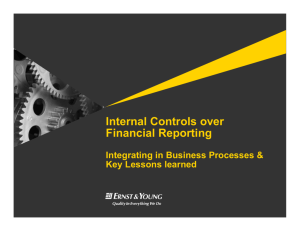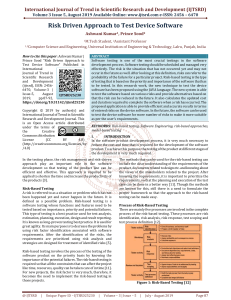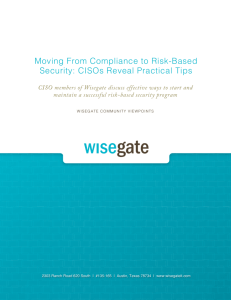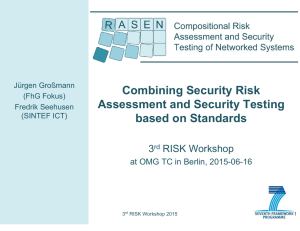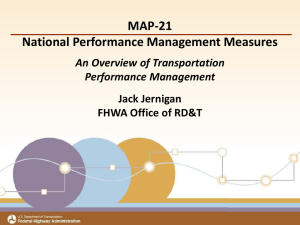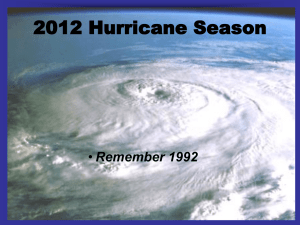FHWA`s Risk-based Approach to Stewardship and Oversight
advertisement
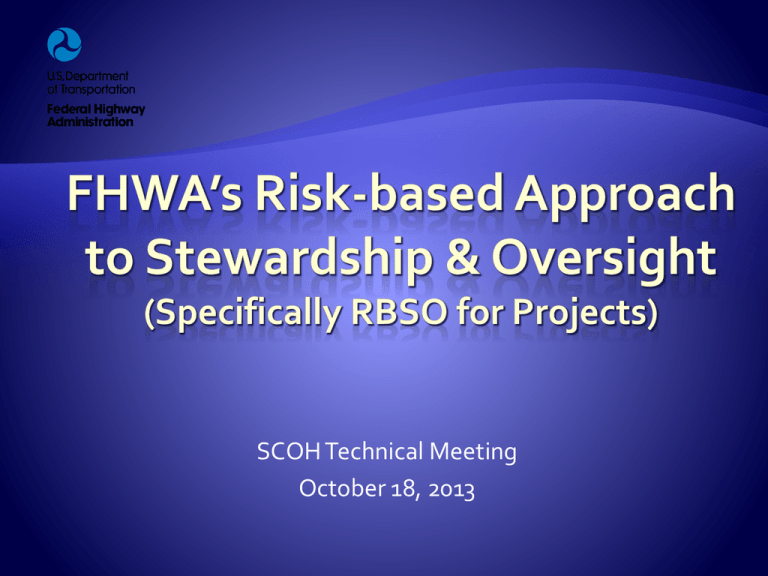
SCOH Technical Meeting October 18, 2013 Why the new approach? Risk-based Project Involvement Required Project Actions Compliance Assessment Program (CAP) Projects of Division Interest (PoDI) Projects of Corporate Interest (PoCI) Questions 2 MAP 21 Changes Need to make more effective use our limited resources Recent evaluations of our approach to stewardship & oversight 3 Risk-based: risk assessment is integrated throughout the performance planning process Data-driven: decisions are grounded in objective data and information to the extent possible Value-added: actions are taken with a primary objective of improving programs and projects Consistent: actions are based on consistent approach to planning, risk assessment, and S&O 4 Project Involvement Required Project Actions Data-driven Compliance Assurance Risk-based Project Involvement Program Involvement Required Program Actions Risk-based Program Involvement 5 1. Required Project Actions Prescribed in Federal law and can’t be delegated Examples include: Approval of environmental documents such as Record of Decision or Finding of No Significant Impact Approval of non-competitive/force account contracting Participation in project costs incurred prior to FHWA authorization 6 2. Data-driven Compliance Assurance FHWA Compliance Assessment Program (CAP) Cultural change regarding project oversight Statistical approach that is defensible and data driven Allows conclusions to be inferred over entire population of projects at national and local level One element of project involvement 7 2. Data-driven Compliance Assurance FHWA Compliance Assessment Program (CAP) Establishment of the project population FMIS as the data source Projects authorized for construction in last 12 months Random sampling from the Division population Sample size thru statistical criteria (90/10/5) CAP review guides 8 3. Risk-based Project Involvement a. Projects of Division Interest (PoDI) Informed by Division/State assessment of risk Selected based on a consistent set of project selection criteria and target ranges Active engagement by DFSs for consistency 9 3. Risk-based Project Involvement a. Projects of Division Interest (PoDI) Documented approach to selecting PoDI projects Brief project-specific S&O plans (not detailed agreements) outlining the specific areas involvement. Does not change the State’s administration of their projects 10 3. Risk-based Project Involvement b. Projects of Corporate Interest (PoCI) Informed by FHWA assessment of risk Selected based on consistent set of criteria Project-specific S&O activities incorporated into Division Unit Plans 11 3. Risk-based Project Involvement b. Projects of Corporate Interest (PoCI) The selection criteria for PoCI projects includes: NHS Projects w/significant impact on system and/or Projects w/significant influence on FHWA policy, initiative or element (critical to FHWA performance) Sufficiently scoped thru NEPA (reasonable assurance of advancement to implementation) 12 3. Risk-based Project Involvement b. Projects of Corporate Interest (PoCI) Examples of PoCIs includes: National Highway System projects that have significant national or regional network impacts or benefit ( San Francisco-Oakland Bay Bridge, Tappan Zee Bridge in NY, I-93 thru NH) Projects that have significant elements that impact or influence national goals, objectives or policies (Alaskan Way Viaduct Replacement in WA, St Croix River Crossing in MN, US36 in CO) 13 Stewardship and Oversight Agreement Guidance Monitoring implementation in PY’14 to make it better next year 14 15
